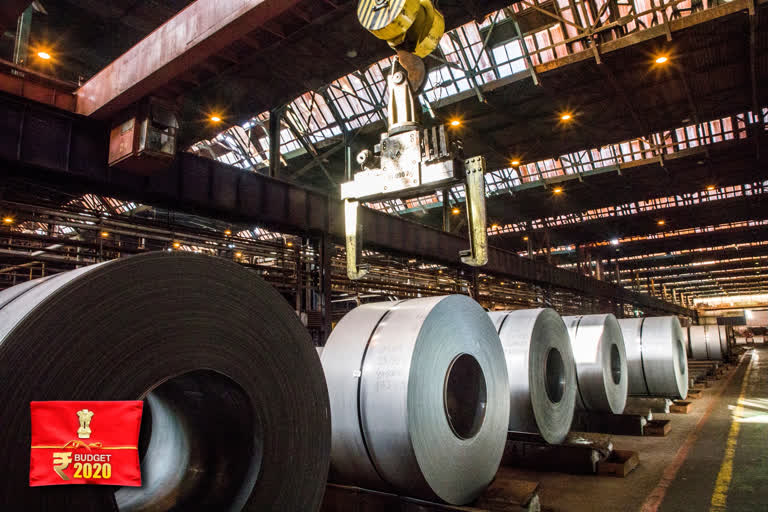آٹو موبائل میں تبدیلی عروج پر ہے، ماحولیات نظام میں بڑھتے خدشات کی وجہ سے رفتہ رفتہ کم آلودگی پیدا کرنے والی گاڑیاں اپنائیں گے۔'
سنہ 2019 میں الیکٹرانک (ای وی) کا مثبت ری ایکشن اور سنہ 2020 کے لیے بڑی آٹوموبائل کمپنیوں کے منصوبوں سے یہ ظاہر ہوتا ہے کہ بھارت میں الیکٹرانک گاڑیوں کی مارکیٹ میں ڈیمانڈ اور سپلائی میں کوئی مسئلہ نہیں ہوگا۔
در حقیقت ایک حالیہ رپورٹ میں مورگن اسٹینلی نے اشارہ کیا ہے کہ بھارت اور چین سنہ 2030 تک توانائی سے چلنے والی گاڑیوں کو اپنانے کے لیے دنیا کی رہنمائی کریں گے۔
لیکن اصل سوال یہ ہے کہ کیا یہ کافی ہے؟ بھارت کے لیے اس میں کیا ہے؟
آٹوموبائل صنعت کے پیمانے اور دائرے پر پڑا داؤ لگا کر بھارت الیکٹرانک گاڑی بنانے کا ایک عالمی مرکز بن سکتا ہے۔
یہ کیسے ہو سکتا ہے؟
ای وی کے لیے نیا تیل لیتھیم کے علاوہ، ایک اور اہم ان پٹ جس کو ترجیح دی جانی چاہیے وہ پسند کا مواد ہے، جو ملکیت کی کل لاگت کو کم کرے گا، استحکام کو یقینی بنائے گا، ڈرائیونگ کی حد میں اضافہ کرے گا، سمجھوتہ کیے بغیر گاڑی کا وزن کم کرے گا۔
جیسا کہ ہم اپنے لیتھیم کے ذخائر کو نہیں جانتے، ہمیں درآمد پر انحصار کرنے کی ضرورت۔
ایک رپورٹ کے مطابق بھارت میں ایک ہزار شہری میں سے محض 22 لوگوں کے پاس گاڑیاں ہیں۔ جبکہ امریکہ میں فی ایک ہزار شہریوں میں سے 821 افراد کے پاس گاڑیاں ہیں، اس رپورٹ کے مطابق بھارت میں آٹو موبائل سیکٹر میں بہت گنجائش ہے۔
Intro:Body:
Summary: In this Article Shantanu Rai explains how the strengths of country’s steel industry can be utilised to establish India as a global manufacturing hub for Electric Vehicles.
Hyderabad: The mobility industry is on the cusp of transformation.
With growing environmental concerns, we will observe gradual adoption of electric vehicles/zero emission vehicles.
Positive response for electric vehicles (EVs) in 2019 and plans of major automobile companies for 2020 indicate that there won’t be any issues of demand and supply in the Indian EVs market.
In fact, in a recent report, Morgan Stanley has indicated that India and China will lead the world in adoption of electric mobility by 2030.
But, the real question is - should India contend with this?
Changing automobile industry dynamics present a valuable opportunity for us.
By betting big on the scale and scope of domestic steel industry, India can become a global EV manufacturing hub.
How can it happen?
Apart from Lithium, the new oil for EVs, another critical input that needs to be factored in is the material of choice that will lower total cost of ownership, ensure sustainability, formability, enhance the driving range, reduce the weight of the vehicle without compromising safety.
This material of choice would be ‘STEEL’ and particularly the family of next-generation Advanced High Strength Steels (AHSS) and Electric Steels.
As we don’t have known reserves of Lithium, we need to depend on imports.
In contrast, we can capture other significant parts of the value chain by leveraging the potential of our domestic Steel sector as it has a cost advantage due to the abundant availability of iron ore and significant learning curve.
At 106.54 Million Tons of liquid steel production in 2018-19, the share of value-added steels (the superset for AHSS & Electric steels) in the overall product mix is very low at 8-10% and we are dependent on imports for the same.
This is a major impediment in the growth of domestic high-end manufacturing and, as a result, reduces our ability to achieve cost leadership.
Thus, there is an imminent need to increase the production of value-added steel in the country.
Budget 2020-21: Need for incentives and subsidies
Plausible incentives to boost high-value steel production can be considered.
One suggestion would be to provide input subsidies to producers commensurate to the quantity of value steel produced.
Two, providing import subsidies on imported plant and machinery and rationalization of taxes across the value chain can also boost the sector significantly.
To sum, the right reforms at the right time can create an amenable ecosystem for India to become a global EV manufacturing hub, capitalize trillion-dollar plus market opportunities across the Steel & Auto value chain.
This will have a tremendous multiplier effect on the overall economy.
(Shantanu Rai is a materials technologist and works as a Consultant with NITI Aayog. Views expressed above are his own.)
Conclusion:



